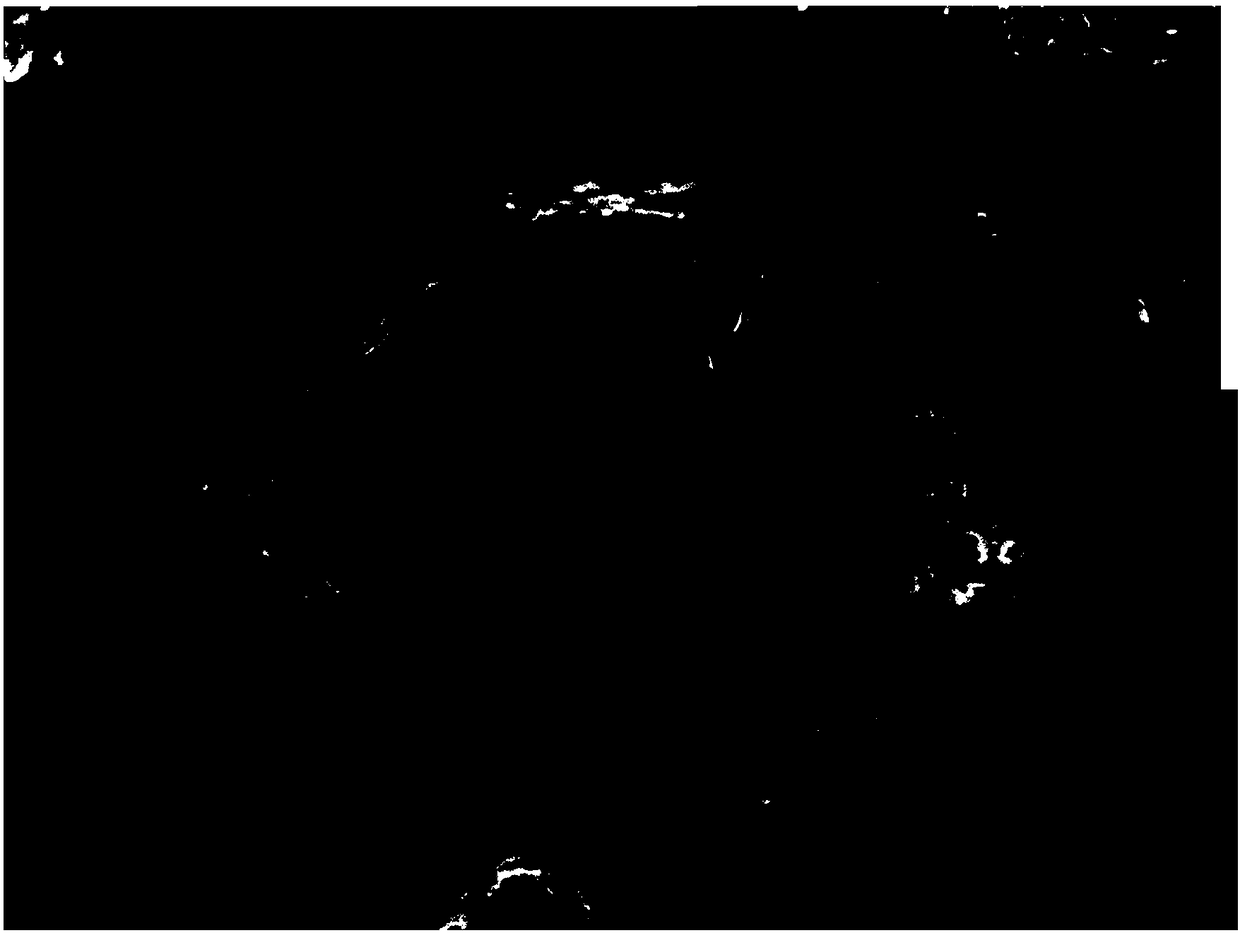Preparing method of lithium ion battery silicon carbon negative electrode material
A technology for lithium-ion batteries and negative electrode materials, applied in battery electrodes, nanotechnology for materials and surface science, secondary batteries, etc., can solve problems that hinder the industrial production of silicon/carbon composite materials, and achieve mild conditions and electric The effect of improved chemical properties and simple steps
- Summary
- Abstract
- Description
- Claims
- Application Information
AI Technical Summary
Problems solved by technology
Method used
Image
Examples
Embodiment 1
[0025] (1) Disperse 0.5g of 50-80nm silicon powder in 100mL of deionized water by ultrasonication, add 5g of polydiallyldimethylammonium chloride, after ultrasonication for 2 hours, centrifuge, wash with water 3 times, vacuum at 70°C After drying for 10 hours, polymer-modified silicon nanoparticles (Si-PDDA) were obtained.
[0026] (2) Add 2g of 10-12um mesophase carbon microspheres to 90mL of a mixture of concentrated sulfuric acid and concentrated nitric acid with a volume ratio of 3:1, stir and reflux at 70°C for 10 hours, wash with water until neutral, and then dry to obtain oxidized Mesophase carbon microspheres (O-MCMB).
[0027] (3) Add 0.1g Si-PDDA to the mixture of 45ml ethanol and 5mL water, ultrasonically disperse, add 0.7gO-MCMB, stir ultrasonically for 1 hour, add 10mL 0.05g / mL sucrose aqueous solution, stir and evaporate the solvent in a water bath at 70°C.
[0028] (4) Put the dried sample into an argon-protected tube furnace for calcination at 700° C. for 2 ho...
Embodiment 2
[0034] (1) Disperse 0.5g of 200nm silicon powder in 100mL of deionized water by ultrasound, add 3mL of aminopropyltriethoxysilane, stir for 2 hours, centrifuge, wash with water 3 times, and vacuum dry at 70°C for 10 hours to obtain a polymer material-modified silicon nanoparticles (Si-APTMS).
[0035] (2) Add 2g10-12um mesocarbon microspheres and 1.5g sodium dodecyl sulfate into 80mL water, stir for 2 hours, centrifuge, and dry to obtain mesophase carbon microspheres modified by sodium dodecyl sulfate (MCMB- SDS).
[0036] (3) Add 0.15g of Si-APTMS to the mixture of 45ml of ethanol and 5mL of water, after ultrasonic dispersion, add 0.7g of MCMB-SDS, ultrasonic for 1 hour, and add 10mL of 0.05g / mL glucose solution. Stir in a water bath at 70°C and evaporate the solvent to dryness.
[0037] (4) Put the dried sample into an argon tube furnace for calcination at 800° C. for 3 hours to obtain the final product.
[0038] Figure 5 It is the scanning electron microscope picture of ...
Embodiment 3
[0041] (1) Disperse 0.5g of 500nm silicon powder in 100mL of deionized water by ultrasound, add 2g of hexadecyltrimethylammonium bromide, ultrasonic for 2 hours, centrifuge, wash with water 3 times, and vacuum dry at 70°C for 10 hours. Polymer-modified silicon nanoparticles (Si-CTAB) were obtained.
[0042] (2) Add 10-12um mesocarbon microspheres into 0.5M alkaline potassium permanganate solution, stir for 24 hours, wash with water until neutral and dry to obtain oxidized mesocarbon microspheres (O-MCMB).
[0043] (3) Add 0.2g of Si-CTAB to a mixture of 45ml of ethanol and 5mL of water, and after ultrasonic dispersion, add 0.7g of O-MCMB, stir for 3 hours, and add 0.2g of phenolic resin. Stir in a water bath at 70°C and evaporate the solvent to dryness.
[0044] (4) Put the dried sample into an argon tube furnace for calcination at 500° C. for 8 hours to obtain the final product.
PUM
| Property | Measurement | Unit |
|---|---|---|
| current efficiency | aaaaa | aaaaa |
Abstract
Description
Claims
Application Information
 Login to View More
Login to View More - R&D
- Intellectual Property
- Life Sciences
- Materials
- Tech Scout
- Unparalleled Data Quality
- Higher Quality Content
- 60% Fewer Hallucinations
Browse by: Latest US Patents, China's latest patents, Technical Efficacy Thesaurus, Application Domain, Technology Topic, Popular Technical Reports.
© 2025 PatSnap. All rights reserved.Legal|Privacy policy|Modern Slavery Act Transparency Statement|Sitemap|About US| Contact US: help@patsnap.com



